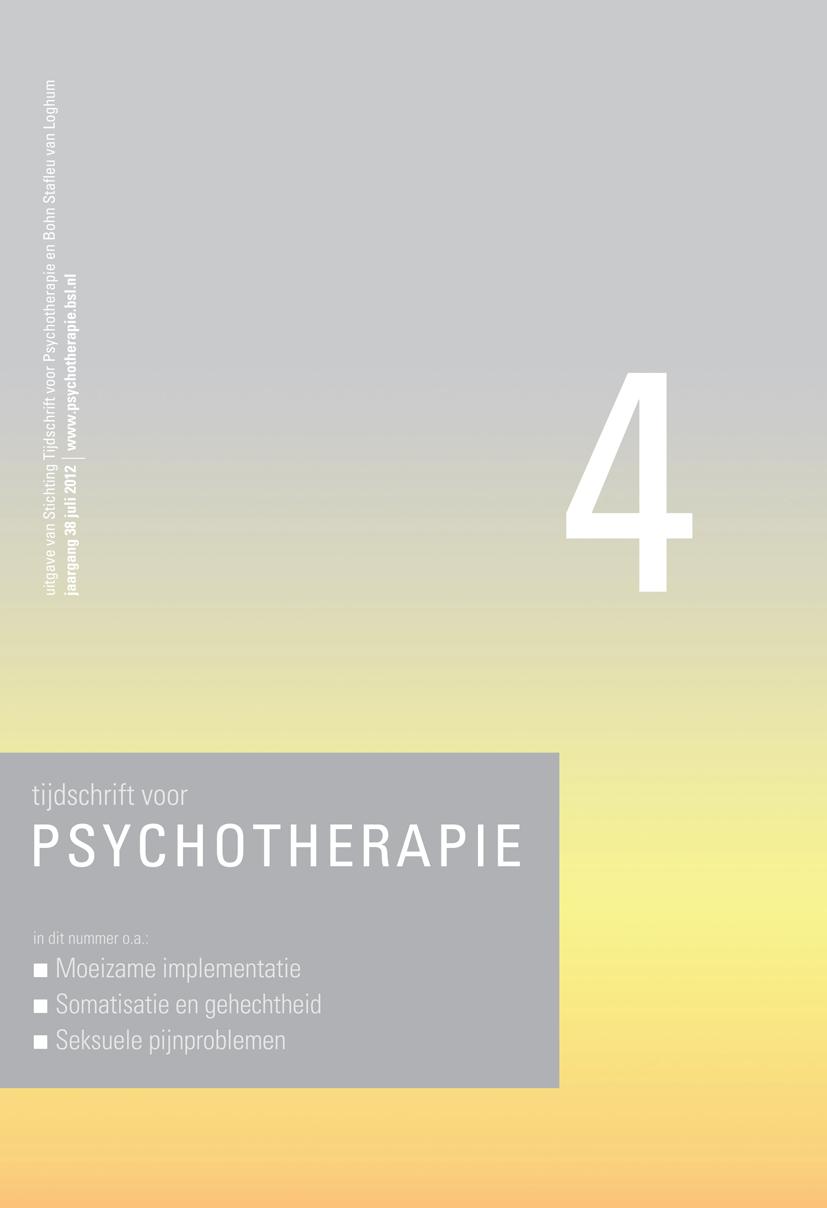Twelve years ago the Sinai Centre in the Netherlands started to treat ‘young veterans’, participating in post-Second World War UN and NATO missions. The implementation of this new treatment program was far from easy and many lessons were learned. The implementation had negative consequences: splitting among treatment staff, absence through illness, staff leaving, an ambivalent management and very difficult interactions between staff and veterans. In this paper we discuss the factors complicating a successful implementation of a treatment program for young veterans. Fortunately, in the end a successful treatment program was achieved.
From a theoretical perspective, a link can be assumed between insecure attachment and somatization, which can be explained by deficits in mentalization, by heightened central nervous system activity and associated hypervigilance of somatic signals, and by abnormal illness behavior that characterizes the somatizing patient. In this article, the empirical literature addressing these theoretical links is reviewed. One of the most important findings is that currently, few empirical studies have examined attachment status in somatoform and somatizing patients. The limited available literature suggests that insecure attachment is rather prevalent in somatoform disorders. Yet, at the same time, insecure attachment is neither a necessary, nor a sufficient prerequisite for the etiopathogenesis of somatically unexplained physical symptoms. Furthermore, studies suggest an association between insecure attachment and deficits in mentalization, particularly alexithymia, between insecure attachment and heightened central nervous system activity, and between insecure attachment and abnormal illness behavior. For a better understanding of the association between attachment styles and somatization we need further research studying simultaneously the associations of attachment styles, mentalizing, central nervous system reactivity and/or illness behaviour with measures of somatization.
Literature on male dyspareunia is rare, and even more so about psychosomatic elements in its etiology. A case is presented here that seems remarkable because the client presented himself with two distinct types of genital and sexual pain: pain in the glans of the penis, in the aftermath of a period during which his foreskin was painfully tight; and pain during and after ejaculation, combined with other pelvic complaints, commonly labeled as Chronic Pelvic Pain Syndrome. While reflecting on the various complaints, some etiological aspects of these two types of dyspareunia are explained. The author intends to stimulate the readers enthusiasm for a psychosomatic problem analysis, now that this line of thought seems to make a comeback in clinical practice.

